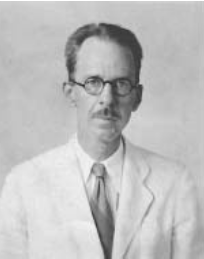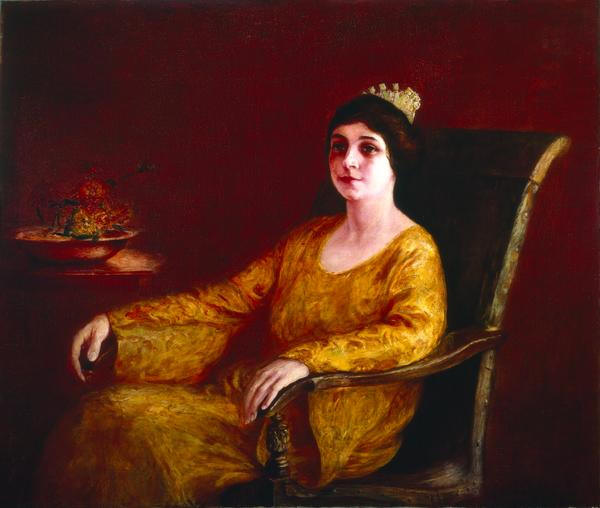

Queer Places:
Metairie Cemetery
New Orleans, Orleans Parish, Louisiana, USA
 Charles W. Bein (August 23, 1891 - June 24, 1966) was the Director of Arts
and Crafts Club’s art school in New Orleans. He was a Tulane graduate and
painter. Charles Bein
was the founding director of the Arts and Crafts Club and remained in charge
for 10 years.
Charles W. Bein (August 23, 1891 - June 24, 1966) was the Director of Arts
and Crafts Club’s art school in New Orleans. He was a Tulane graduate and
painter. Charles Bein
was the founding director of the Arts and Crafts Club and remained in charge
for 10 years.
Charles Bein was a 1912 graduate of Tulane University where he took as many courses related to architecture that he could in the School of Technology. Bein was able to get into Columbia’s graduate school in architecture, and while there attended classes at the Art Students League. Afterward he studied at the Atelier Heimann in Munich and the Atelier Colarossi and Académie Grande Chaumière in Paris.
Bein returned to the United States in 1917 to head up the new Tulane School of Architecture, replacing Nathaniel Courtland Curtis. By 1919 Tulane began to develop architecture into something to rival the University of Virginia’s new school of architecture, established in 1919. Albert Bledsoe Dinwiddie, a graduate of the University of Virginia, with three degrees from the institution, had become president of Tulane by 1918 and was well aware of the need for Tulane to rival the University of Virginia, his alma mater. Despite some rave reviews throughout the city according to local newspapers, three years later, Bein gave up as chairman and professor at the Tulane School of Architecture in order to become an artist.
Lyle Saxon, a personal friend of Bein’s, wrote for the The Times Picayune an article about Bein that explained a bit about the fledging school of architecture at Tulane at that time. Entitled Tulane’s College For Architects Has High Rank. Increasing Number of Students Makes Two Professors Necessary, the article revealed the terrible lack of funding for the Tulane School of Architecture. Tradition in New Orleans has it that when the University of Virginia School of Architecture was established in 1919, headed by Fiske Kimble of Boston who graduated from Harvard and had a Ph.D. from the University of Michigan, Tulanians became jealous and determined to forge ahead with a bona fide architecture school. That is when William Woodward who also taught at Newcomb Art School, Colonel Allison Owen and Richard Koch stepped in, once more, by the fall of 1920, to be paid less than “plasterers and bricklayers.”

Olive Boullemet Lyons, by Charles Bein
In the summer of 1923 Bein journeyed through Spain and Italy and down to Tangiers. The fruits of this jaunt (consisting of about 12 oils and 20 or 30 water colors) were exhibited at the Arts and Crafts club and later at the New Galleries in New York in January of 1924. In February of 1925 in New York Bein was “having a first one man show in the New Gallery” of his paintings. Irene Cooper wrote in a New Orleans newspaper about a 1925 exhibition of Bein’s work. “Mr. Bein has handled his subjects with feeling and an indisputable knowledge of technique. Mr. Bein was named in the New York Times only a few months ago as one of the five foremost water colorists in the United states and one senses the touch of the master in these pictures executed with skill and sureness.”
Bein’s friend and associate at Tulane, William Spratling, who also taught architecture at Tulane as well as sketching at the School of Art at the Arts and Crafts Club traveled down to Mexico where he found his true métier at Taxco working with silver and retraining the natives in the art and craft of silver making. Bein followed Spratling to Mexico in 1925 along with Caroline Durieux and Natalie Scott to hear the new head of the Middle American Research Institute at Tulane, Frans Blom, lecture. Bein returned to Mexico to paint at Orizaba in 1930.
In 1927 Bein won the Blanche Benjamin award offered annually for the past four years, since 1923 at the Delgado Museum for the best painting of a Louisiana landscape. Conrad Albrizio and James Gibert were honorably mentioned. In the first year of the competition Charles Woodward Hutson was the winner, while in 1925 Paul Frolich, Philadelphia artist, won and Weeks Hall in 1926.
Meanwhile in 1927 Bein begun serving as the first director of the Arts and Crafts Club at the old Seignouret-Brulatour House and Courtyard at 520 Royal Street. Classes at the school on Royal Street under Bein’s direction included painting, sculpture, drawing, printmaking pottery and architecture. The objective of the Arts and Crafts Club according to artists and professors at Newcomb College Art School, Will Henry Stevens and Ellsworth Woodward, was “to attract artists and to revitalize the oldest part of New Orleans.” The first issue of the “Arts and Crafts Review” was dedicated to Charlie Bein: “To one from whom in daily contact we have learned the true meaning of nobleness; to one who has typified all that is denoted by unselfishness; to one who has been in every sense of the word a teacher and a friend, we the students of the New Orleans Art School dedicate the first issue of our school paper.” After developing one of the most important institutions in the art and culture of New Orleans and the South, Bein resigned in 1936 to devote full time to painting.
Bein left “stocks, bonds, security or cash then remaining in the National Bank of Commerce of New Orleans to the National Museum of Art in Washington D.C. subject to the condition that the proceeds. . . shall be used . . . to acquire a work or works of art, paintings, sculpture, ceramic or bronze.” This was before the establishment of the Smithsonian’s National Galleryof Art.
In 1926 Pelican Bookshop Press, New Orleans, published "William Spratling and William Faulkner, Sherwood Anderson and Other Famous Creoles: A Gallery of Contemporary New Orleans", issued in 250 copies. The “Famous Creoles” (with ages in 1926) were
My published books: